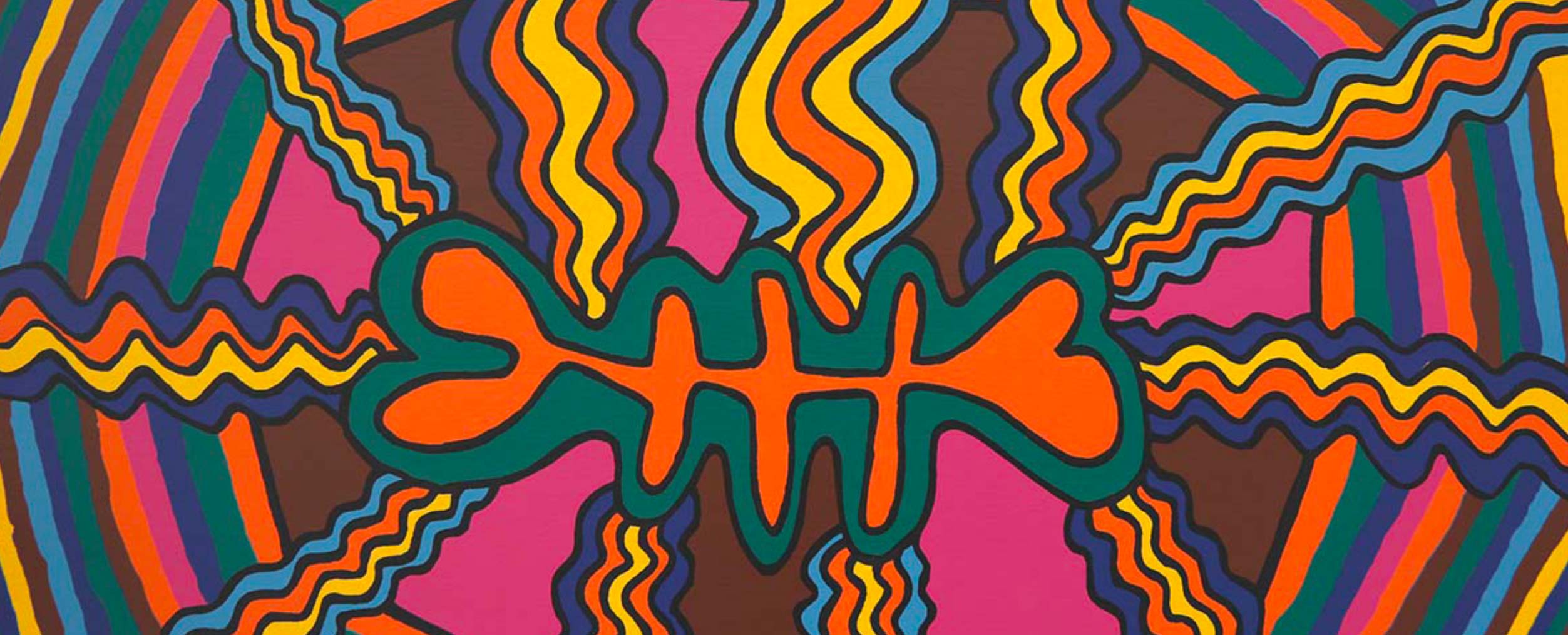
Thinking About Jimmy Pike Lesson Plan Series Overview
Jimmy Pike (c1940–2002) is one of Australia’s most famous artists. Jimmy was one of the first artists of the contemporary Indigenous art movement to use vibrant colour instead of more traditional earth tones. His influence over the contemporary Indigenous art movement has been significant and lasting.
Jimmy Pike was born in the Great Sandy Desert south of the Fitzroy River Valley in Western Australia. He was a member of the Walmajarri people. His clan was one of the last Aboriginal groups to leave the desert to settle on the cattle station country in the Kimberley during the 1950s.
This Visual Arts program has been inspired by conversations with David Wroth from Japingka Gallery. Wroth worked closely with Jimmy Pike over many years and his respect and appreciation of Jimmy’s extraordinary talent is evident. David first met Jimmy when Wroth was the print-making teacher in Fremantle Prison. Later he and Stephen Culley worked closely with Jimmy to form Desert Designs, taking Jimmy’s designs to the world.
The program is aimed at Year 1 students and focuses on three main themes that are central to Jimmy Pike’s work: energy, connection to country or place, and joyful colour. Through a range of activities, including art-making, viewings and discussions, students respond to Jimmy’s artworks.
Primary School Visual Art Program - Lesson Plans
The ‘Thinking About Jimmy Pike’ Visual Arts program comprises fifteen 50-minute classes. The activities can be taught as separate short projects that each last for one or more lessons, or as a semester-long art program. The lessons are sequential and connect conceptually, and they build skills towards a final art project.
Arts: Visual Arts
Theme: Thinking About Jimmy Pike
Focus artist: Jimmy Pike
Region: Fitzroy Crossing
Curriculum
Western Australian Curriculum Content Descriptions
Year 1 syllabus
MAKING: Ideas – Exploration of, and experimentation with, the visual art elements of shape, colour, line, space and texture. Exploration of different materials, media and/or technologies, when creating artwork.
MAKING: Skills – Development of artistic skills through experimentation with line to create artwork. Exploration of techniques and art processes.
MAKING: Production – Use of visual art elements and techniques to create 2D and 3D artworks that communicate an idea to an audience.
RESPONDING: Personal opinions, feelings and ideas about artwork they view and make.
Australian Curriculum Version 8.3 Content Descriptions
Foundation to Year 2
Explore ideas, experiences, observations and imagination to create visual artworks and design, including considering ideas in artworks by Aboriginal and Torres Strait Islander artists (ACAVAM106).
Use and experiment with different materials, techniques, technologies and processes to make artworks (ACAVAM107).
Create and display artworks to communicate ideas to an audience (ACAVAM108).
Respond to visual artworks and consider where and why people make visual artworks, starting with visual artworks from Australia, including visual artworks of Aboriginal and Torres Strait Islander Peoples (ACAVAR109)
© This lesson plan has been created by Ana Nail and Japingka Gallery. Educational study use encouraged.
